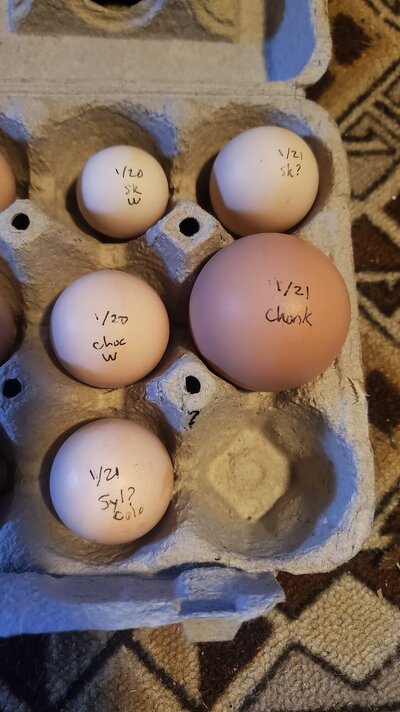I'd breed too black. If he's Dun, chocolate, paint, or Splash the offspring will show whatever true color he is.Ok, what should I test breed him to? What would we be looking for?
I have:
Black Australorp
Rhodes Island Red
Barred Rock
SLW
EE (so probably not these..)
For silkies:
Black
Splash
It will be this fall but I'll have more silkies:
Paint
Chocolate
Blue
If he's Sex linked Chocolate, Female offspring will be Chocolate, & males Black.
If he's Splash, he'd make all Blues.
If he's Paint he'd make more Paints, or White birds, I think more blacks are a possibility.
If he's Dun, he'd make Half of the offspring Dun, & the other half black.





